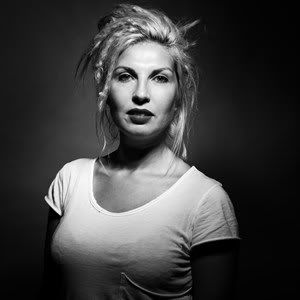Coming from a Sami background herself, the 32-year-old student from Varangerbotn in the far north of the country has seen first-hand the conservative impulses she feels have held back women in the indigenous population.
“Like anywhere else, people will watch Lady Gaga and like what they see. But if one of us acts in the same way we’ll get in trouble,” Egilsdatter told The Local.
“I think that’s true of Norway in general, but even more so in the Sami community.”
Egilsdatter’s pictures form part of the “Shameless” project, an exhibition of works from 37 students at the Bilder Nordic School of Photography.
“People have been really amazed by my pictures. The models and I are really proud of how relaxed and comfortable they look.”
Possibly fearing the reactions from friends and family, three of the women she photographed asked not to be included in the exhibition. But for 14 others, including Sami politician Heidi Persdatter Greiner Haaker, the experience has proved something of a revelation.
“I have to say I was deeply torn over whether I should be involved in this. After seeing the exhibition, I’m really glad I did it,” the 46-year-old member of the Sami parliament wrote on her blog.
Egilsdatter said the project remains a work in progress. She has ten more women lined up for photo shoots at Easter and is planning to present a broader cross-section of her work at further exhibitions later in the year.
“This is just a handful of the ladies. There’s a lot more to come. So, for example, there will also be images of women masturbating. I want to bring in wider aspects of sexuality.”
After seven years as a hair and makeup artist – “I hated it” – Egilsdatter realized she wanted to find an outlet for her creative and ideological sides.
“One day I picked up a camera and immediately thought: wow, this is what I need to be doing.”
While conceding that hardline Christian conservatism once fulfilled an important function in a Sami community ravaged by alcoholism, Egilsdatter now believes it’s high time for a change.
“Being conservative is just another way of looking down on people. Modern women have birth control, good healthcare, and don’t need to be protected by an outdated moral code.”
She also hoped the exhibition would serve as an eye-opener for Norwegians with a prejudiced view of Sami life.
“We’re often accused of just taking, taking, taking, and giving nothing back. It’s quite a racist point of view. People will feel sorry for the American Indians without realizing that the situation is the same in Norway today.”
Iris Egilsdatter’s exhibition runs at Møllergata 3 in Oslo until March 24th. See more images here.

Iris Egilsdatter (Photo: Simen Øvergård)



 Please whitelist us to continue reading.
Please whitelist us to continue reading.
Member comments